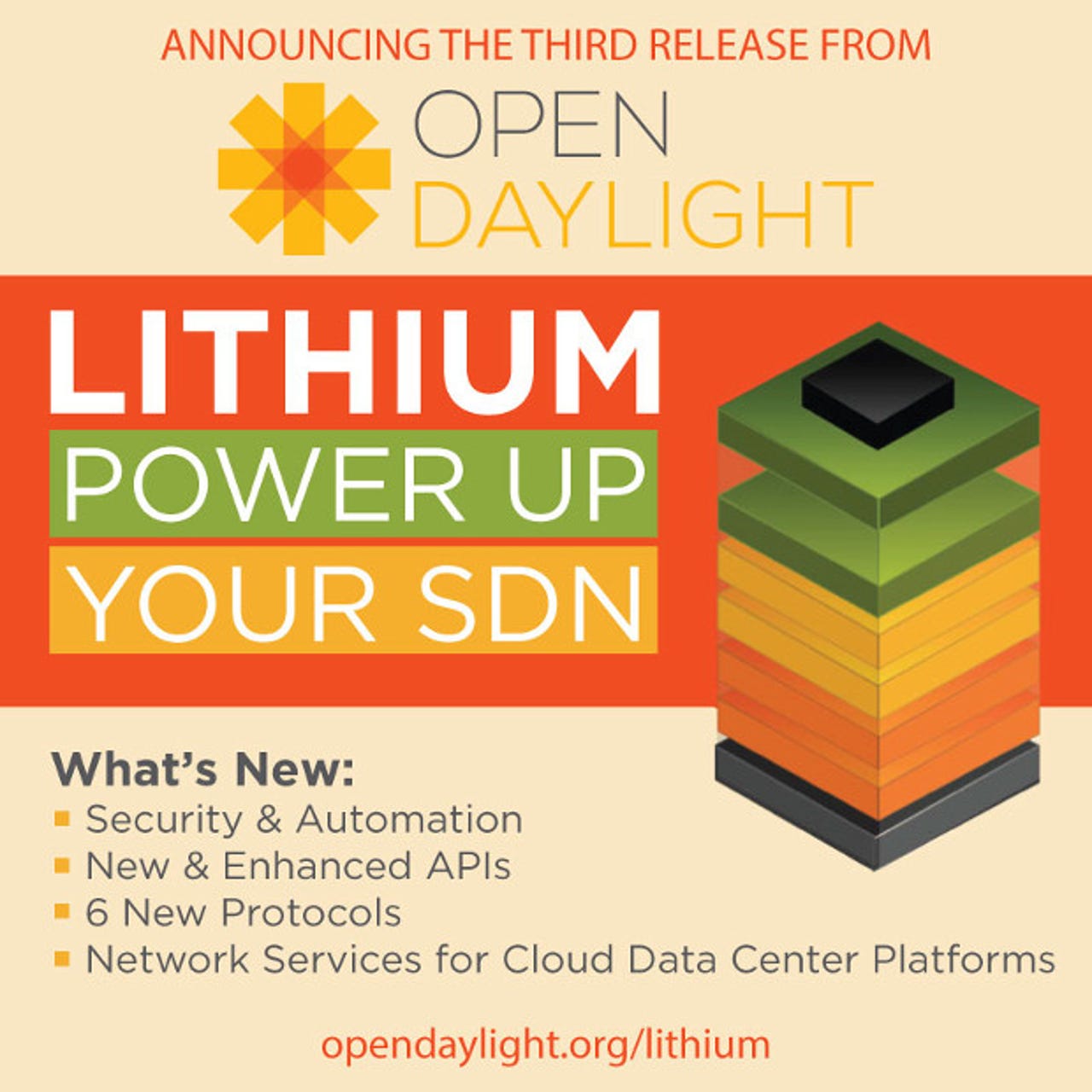New release of OpenDaylight software-defined network

Software-defined networking, which seeks to do for networking hardware what virtualization does for servers, is getting closer to wide-scale deployment. In part, that's because the open-source OpenDaylight is continuing to advance SDN's art and science.

In its third release, Lithium, OpenDaylight comes with the following new features:
● Increased scalability and performance. OpenDaylight's Integration Group spent significant time testing against end user-defined use cases and requirements to boost scalability and performance of core architectural components in Lithium.
● Network services for cloud data center platforms. Native support for the OpenStack Neutron framework combined with features such as SFC, Virtual Tenant Networking (VTN) and Group-Based Policy (GBP) allow users to easily design device, user and group-level policies including customized service chains for firewall, load balancing and other application network services.
● New features for security and automation. Unified Secure Channel eases secure communication between OpenDaylight and widely distributed networking equipment; Time Series Data Repository (TSDR) enables collection and analysis of large amounts of network activity; Device Identification and Driver Management (DIDM) provides end users the ability to discover, manage and automate a wide range of existing hardware in their infrastructure; Persistence ensures application-specific data is preserved over time or in the event of a catastrophe; and Topology Processing Framework allows for filtered and/or aggregated views of a network, including multi-protocol, underlay and overlay representations.
● New and enhanced APIs for interoperability. Network Intent Composition (NIC) enables the controller to manage and direct network services and resources based on describing the "intent" for network behaviors and network policies, while Application Layer Traffic Optimization (ALTO) provides abstractions and services for simplified network views and network services. These new policy/intent-based abstractions augment the existing GBP project that was introduced with the Helium release. Distributed Virtual Router (DVR).
● Six new protocols to support an ever-widening set of use cases. This includes Source Group Tag eXchange (SXP), Link Aggregation Control Protocol (LACP), IoT Data Management (IoTDM), SMNP Plugin, Open Policy Framework (OpFlex) and Control and Provisioning of Wireless Access Points (CAPWAP).
This new SDN technology is moving from the testbed to the market. In a statement, Neela Jacques, OpenDaylight's executive director, said "End users have already deployed OpenDaylight for a wide variety of use cases from NFV, network on demand, flow programming using OpenFlow and even Internet of Things."
AT&T and Cisco, to name two, agree. Margaret Chiosi, AT&T's distinguished network architect, said, "As AT&T builds our global SDN controller using ODL components, we look forward to releases like Lithium with clustering and its improved features."
Dave Ward, Cisco's CTO & Chief Architect, added. "As OpenDaylight matures, we see it becoming a cornerstone whole-stack environment. This enables SDN and NFV to be baked-in for complete solutions. By providing the features required for cloud data center providers, such as Group Based Policy, Service Function Chaining, and more integration and APIs, OpenDaylight is now the most advanced open source controller in the industry and by far the best choice for users looking to enable SDN and NFV [Network Functions Virtualization] in their networks."
Related Stories: